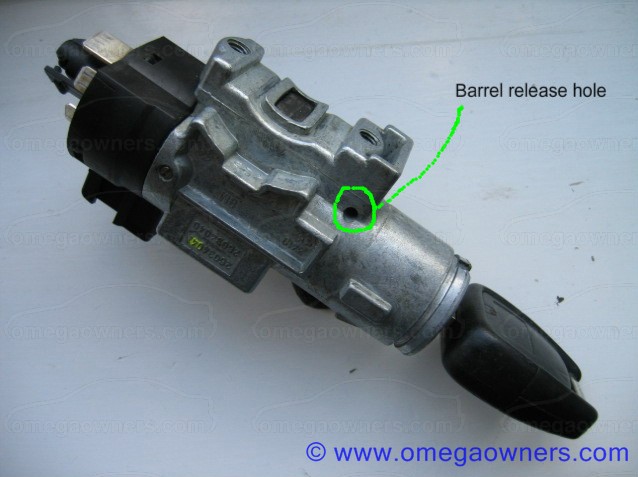I will assume that if you are thinking of doing this then you must be a fairly competent mechanic so this will not be a complete step by step guide.
Parts RequiredFrom the donor car:
Gearbox with rear cross-member and exhaust support
Differential (not essential---work out the ratios)
Front propshaft section (with vibration damper if present)
Clutch cover and driven plate
Flywheel and bolts
Clutch master cylinder and clutch pedal assy. Do not shorten the feed pipe from reservoir….you need every mm.
Plastic clip securing clutch pipe union to bulkhead
Brake pedal. Note only the pedal is needed, just push out the pivot pin.
Gear lever assy (drill off the rivet heads)
Piece of plastic trim just behind gear lever
Clutch pedal switch (will be on pedal assy if donor has cruise, get connector and wire)
Brake pedal switch and connector (not needed if car already has cruise 4-pin switch)
Section of gearbox/lambda sensor wiring loom
From main dealer:
Spigot needle bearing 90105743
Spigot nylon bush 9157141
 Procedure
ProcedureWith front wheels on ramps and rears raised on axle stands. (Chock front wheels securely or use ratchet straps from wheel to ramp) Raising the rear improves access to the exhaust bolts and centre propshaft joint.
Follow the Haynes manual if unsure but:
Unbolt propshaft then remove front section by tugging sharply off rear section
Unbolt torque convertor from flexplate and remove with gearbox
Unbolt flexplate from crank and remove adaptor ring from crank
Remove centre console then drill off rivet heads fixing gear selector to tunnel
Fit nylon spigot bush into bore in end of crank then gently tap in the needle bearing using a suitable socket.
Fit flywheel and torque the bolts…The crank must not be allowed to turn ‘backwards’ when doing this or the cambelt may slip on its sprockets.
Fit the clutch and centralise. This can be done by eye…visibility is good.
Fit gear lever assy to tunnel and make sure the rubber seal fits correctly then Pop Rivet in place
Check the bellhousing dowels are in the correct places then fit gearbox to engine. Use Locktite on the gearbox crossmember bolts
Look carefully at the rear propshaft splines, there is one wide ‘master’ spline. Locate the corresponding gap on the new front propshaft section and join the two halves. Grease the splines first.
Swap the brake pedals
Remove rubber bung from bulkhead then fit clutch master cylinder, it will fit in without loosening the servo with a bit of wriggling, scuttle has to be removed for access. Bolt on the clutch pedal assy, don’t forget the third bolt high up.
NB the metal clutch pipe fits between the two heater pipes. Fit clutch pipe plastic clip in place on the bulkhead. See pic for pipe route and position of retaining clip.

Drain the master cylinder header with a syringe then cut off the crimped pipe end with a stanley knife and connect the flexi hose with a jubilee clip. Refill the header and allow fluid to drain out via the clutch bleed nipple to flush the old fluid and debris out. Bleed from the bottom up using a pressure feed….no other method works properly.
This is my improvised pressure bleed kit made from an old eezi bleed, the green plastic pipe is a tight fit onto the clutch bleed nipple, fill bottle with hydraulic fluid, open bleed nipple, connect bottle to spare wheel (Max 10psi...otherwise you will get very wet very quickly!!). Allow fluid to flow into the nipple until the (previously empty) reservoir is full then close bleed nipple and test clutch operation.
 Electrical
ElectricalCut off the auto selector switch connector.
Starter inhibit Join the two thick Bk/R wires by soldering.
Reverse Lights Separate the reverse switch wires from the donor loom and solder one side to the Bk wire (was on pin D) solder the other side to the W/Bk wire (was on pin F)
Lambda sensorsPlug-in the Lambda sensors, the auto loom is a bit short so move the connector fixing clips and tyrap the loom in place clear of hot bits. Tie up unused connectors and loom ends.
Ignition Timing RetardUnplug the engine ECU and remove the connector from its hood (1 screw)
Locate the Bk/R wire on pin 42, cut off as far from pin 42 as possible (can do this further up the loom if preferred) then solder to one of the thin Brown wires and tape joint.
Cruise ControlAuto is not wired as shown in Haynes. My 99 was wired as follows:

For safety reasons the cruise has 3 separate circuits which can turn it off, to preserve this on an ex-auto car requires a bit of re-wiring to bring it in line with the manual box wiring.
Identify the Bk/R and Bk/Bu wires from the Brake switch cruise contacts, cut these and crimp together where they leave the main loom.
Remove the autobox ecu from the kick space by drivers foot and discard. Take cover off connector and identify the Bk/Y wire on pin 37. Cut at connector pin and free wire from the loom, pulling it back to the pedal area. Join this wire to the Bk/Bu from cruise brake switch.
Join the Bk/R from cruise brake switch to one wire from clutch switch.
Unscrew fuse box and pull down, find a thin Black wire going to F15, tap into this and connect to the remaining wire from clutch switch.
Re-tape any parts of the loom where you cut the fabric binding and replace any tyraps. Tyrap the auto ecu connector to the ecu mounting bracket. Make sure nothing can get caught on the pedals or throttle cable.















